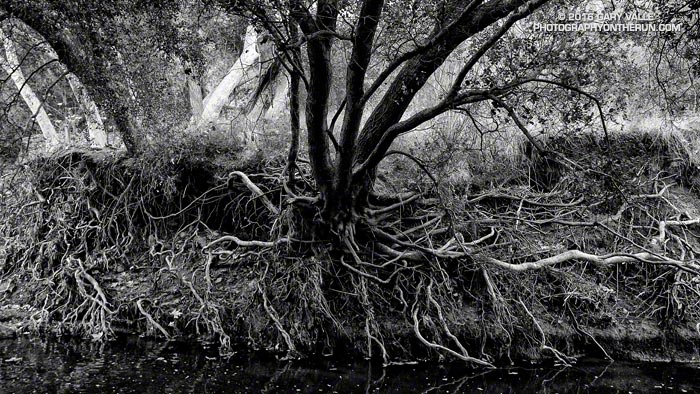
The impressive root system of this California bay has been exposed by stream erosion.

The impressive root system of this California bay has been exposed by stream erosion.
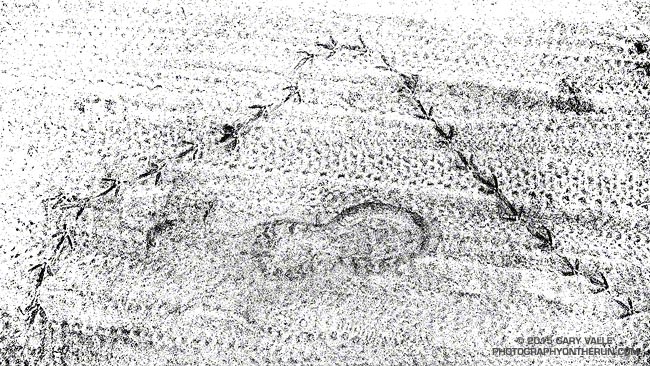
Tracks of California quail and other wanderers in Upper Las Virgenes Canyon.

From this morning’s run to Simi Peak.
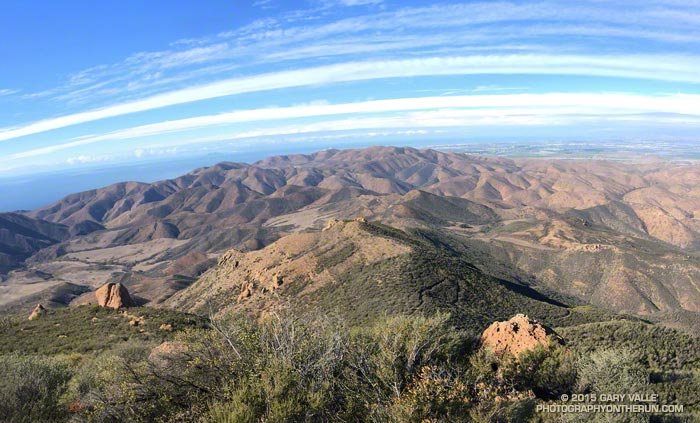
The last couple of days I’d been checking the weather models to try and get an idea of when the cold front might reach Pt. Mugu State Park. Projections ranged from around 10:00 AM to about 1:00 PM.
A group of us were doing an annual end of the year trail run and scramble over Boney Mountain to the Backbone Trail, and then returning by various routes to the Wendy Drive trailhead. Along the way there are great views of the Boney Mountain Wilderness, Channel Islands, Conejo Valley and Ventura Mountains, but you can’t see very far from inside of a cloud.

It turned out clouds would not be a problem. At least not the first half of the day. When I pulled into the parking area at Wendy Drive the front was little more than a white smudge on the western horizon. The sky was clear and it remained clear the entire time we worked up Boney’s Western Ridge. Everyone enjoyed scrambling up the gullies and rocks to the top of the mountain and then over to Tri Peaks.
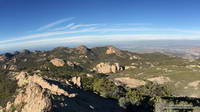
We’d reached Tri Peaks about 40 minutes ago. From there I’d run over to Sandstone Peak, the highest peak in the Santa Monica Mountains. From this panoramic vantage point I could see the front was still well to the west, near Santa Barbara. This gave me some time. I was prepared for rain, but didn’t want to miss the wonderful scenery running down the Chamberlain Trail, over to Serrano Valley, and through Serrano Canyon.
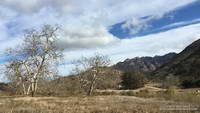
Over the remainder of the run I watched as cirrus clouds ahead of the front gradually muted the sun, mid-level clouds began to develop over the peaks, and the wind became more gusty and fitful. Later in the run the clouds started to lower and thicken and the temperature dropped. Eventually it began to smell like rain.
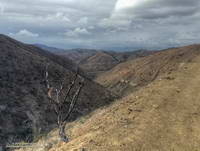
As I crested the hill on Danielson Road I felt a cold drop of rain on my arm and then another on the back of a leg. Clouds covered the sky, and to the west showers draped the ridges and filled the canyons. The front and I were racing the last mile to the trailhead, and I knew who had won.
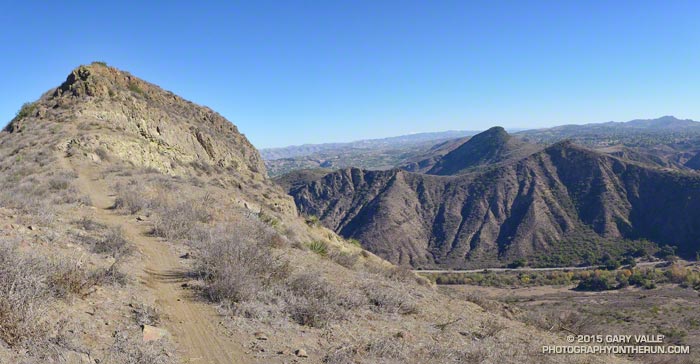
This morning’s run had started on the southern boundary of the Arroyo Conejo Open Space near Amgen in Thousand Oaks. It was 39°F at the beginning of the run and the chill of dawn and brisk north wind made it feel even colder. The plan was to run north on the Arroyo Conejo Trail and connect to the trails in Wildwood Park.
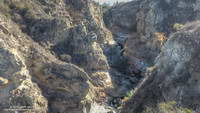
Running on automatic, and hoping to warm up quickly, I followed the Arroyo Conejo Trail north along the shoulder of the canyon. Known as “La Barranca” the three mile long canyon extends from the 101 Freeway to Hill Canyon near Santa Rosa Road. Rounding a corner and working up and over a little hill I looked to my right and was astonished to see that in this section of the canyon a deep, vertical-walled gorge had been cut into the residential landscape.

The wildness of the gorge set the tone for the remainder of the run. Arroyo Conejo, Wildwood Park and the Western Plateau have a scenic, desert southwest character all their own and an extensive trail system. If a bluff, peak or other feature looked interesting, there was generally a way to get to it. I ran along Stagecoach Bluff, then to Lizard Head, and then over to the Canyon Overlook Trail and down to the Conejo Canyons Bridge at the Hill Canyon trailhead.
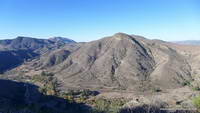
After running up Hill Canyon, I was once again headed uphill, this time on the Western Plateau Trail. I’d caught a glimpse of some mountain bikers high on the bluff above and couldn’t resist continuing. I had more than 10 miles in and was planning to go back through Wildwood Park. Each mile added now would add two miles to my growing round trip total.

That’s the difficult thing about doing an exploratory run — deciding where to turn around. You HAVE to see what’s around each corner and what the view is like from the top of every hill. You can’t turn around just anywhere, and I was looking for the right place.
Turning onto the Outlaw/Gnome Trail, in a few minutes I reached the top of the rock outcrop where I’d seen the mountain bikers. But it wasn’t the top of the climb, and it definitely wasn’t the right spot to turn around. A bit higher I could see a sign silhouetted on the skyline and was curious to see what it said.
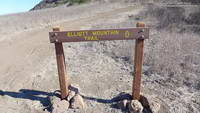
The sign read “Elliot Mountain Trail.” How could I turn around now? Continuing east, a newly cut trail with a bench en route led to the top of the peak. Recently named in honor of Burt Elliot, “a tireless volunteer, open space advocate and champion of trails,” the peak was the perfect place to spend a few minutes enjoying the great view and then start my circuitous trip back to the car.
For trail maps and more information see the Conejo Open Space Foundation web site.
The title photograph is Elliot Mountain with Lizard Head, Mountclef Ridge and Wildwood mesa in the distance.
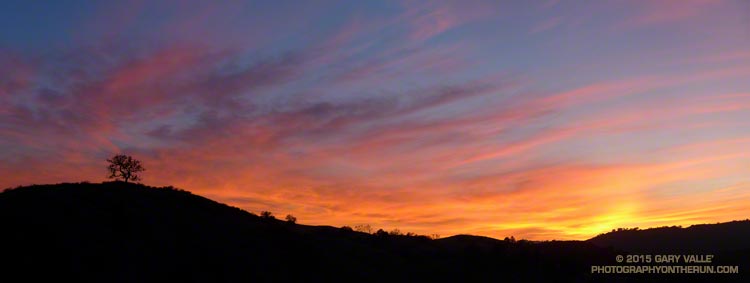
If you are a late afternoon runner and live in the Los Angeles area (or similar latitude), beginning December 11 the sunset time computed by the U.S. Naval Observatory increases from 4:44 PST to 4:45 PST. By the end of December sunset will be about 10 minutes later than today. It isn’t until July 5, 2016 that the computed sunset time begins to decrease.